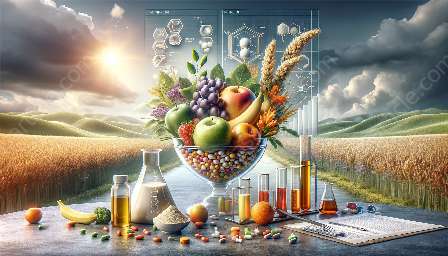Macronutrients are the essential components of a healthy diet, and understanding their digestion and absorption is crucial for overall well-being. In this comprehensive guide, we will explore the intricate process of macronutrients digestion and absorption, and gain a deeper understanding of how nutrition science plays a crucial role in our overall health.
The Role of Macronutrients
Macronutrients, namely carbohydrates, proteins, and fats, are the primary sources of energy for the body. They are essential for various physiological functions, including providing energy, maintaining cellular structure, and regulating metabolic processes.
Digestion of Macronutrients
The process of digestion begins in the mouth, where enzymes in saliva start breaking down carbohydrates into smaller molecules. Once the food reaches the stomach, proteins are broken down into amino acids by gastric enzymes, while fats are emulsified by bile and digested by pancreatic enzymes in the small intestine.
Carbohydrate Digestion
Carbohydrates are primarily broken down into glucose, which is then absorbed into the bloodstream through the small intestine. Glucose serves as the primary source of energy for the body's cells and is crucial for various bodily functions.
Protein Digestion
Proteins are broken down into amino acids, which are then absorbed into the bloodstream. These amino acids are essential for building and repairing tissues, as well as for the production of enzymes and hormones.
Fat Digestion
Fats undergo emulsification and are broken down into fatty acids and glycerol. These smaller molecules are then absorbed into the lymphatic system and eventually enter the bloodstream, where they serve as a concentrated source of energy and play a vital role in cellular function.
Absorption of Macronutrients
Once macronutrients are broken down into their individual components, they are absorbed into the bloodstream and transported to various tissues and organs throughout the body.
Carbohydrate Absorption
Glucose is absorbed through the small intestine and enters the bloodstream, where it is utilized by cells for energy production. Any excess glucose is stored in the liver and muscles as glycogen for future energy needs.
Protein Absorption
Amino acids are absorbed into the bloodstream and transported to various tissues where they are used for protein synthesis, tissue repair, and other metabolic processes. Any excess amino acids are converted into energy or stored as fat.
Fat Absorption
After digestion, fatty acids and glycerol are absorbed into the lymphatic system through specialized vessels called lacteals. They are then transported to the bloodstream and distributed to various tissues where they are utilized for energy production, cell membrane synthesis, and the production of vital hormones.
Nutrition Science and Macronutrient Digestion
Nutrition science plays a critical role in understanding the intricate process of macronutrients digestion and absorption. Researchers and scientists continually study the effects of macronutrients on health, metabolism, and overall well-being. Understanding how the body digests and absorbs macronutrients is essential for optimizing nutritional intake and promoting good health.
In Conclusion
Macronutrients digestion and absorption are vital processes that fuel our bodies and support overall health. By gaining a deeper understanding of the role of macronutrients and their digestion and absorption, we can make informed dietary decisions and optimize our nutritional intake to support our well-being and vitality.

